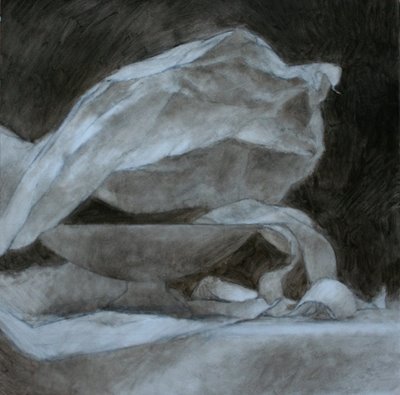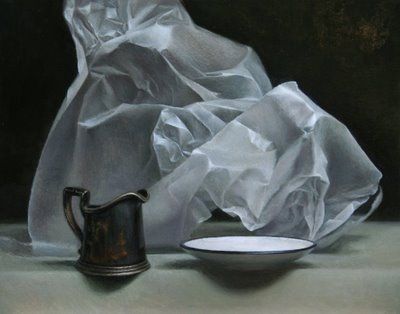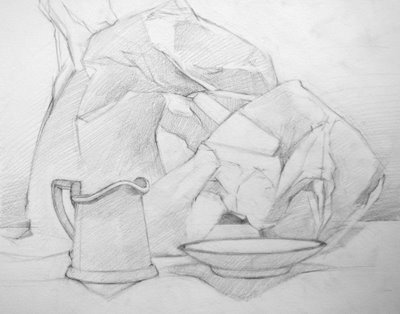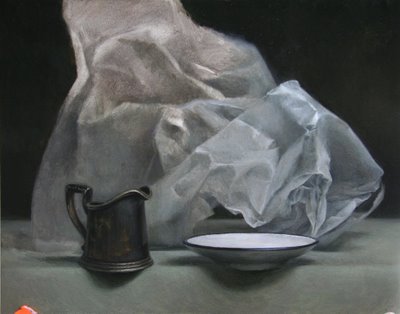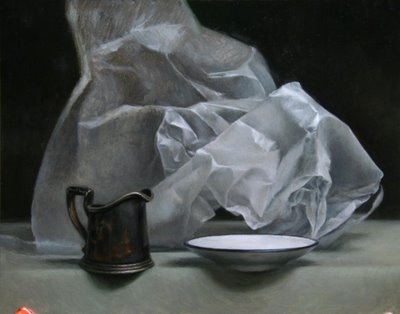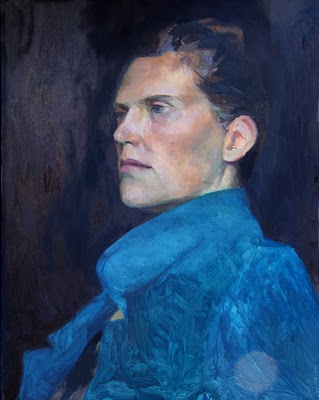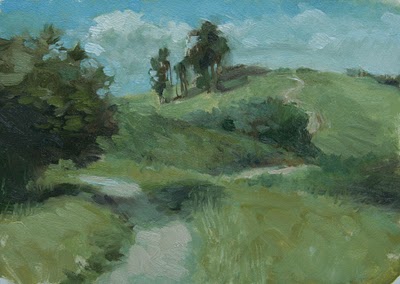 Wax Paper and Ribbon
Wax Paper and Ribbonpreliminary drawing
graphite on panel
I've started a new painting, this is the drawing I've done directly on the prepared wood panel.
I've been taught to do the drawing on paper first, but I've found that when I transfer (trace) my contour drawing to the panel, too much is lost. My linework is degraded so much that I have to spend a lot of time correcting on the panel anyway. So now I draw directly on the panel from start to finish.
The drawing lessons I learned from Juliette Aristides, Ted Seth Jacobs, and Tim Stotz are what I think about most while I draw.
First I rely on the block-in method as taught to me by Juliette. I use long, straight lines to find the major "tilts" of the contours - I try to make just 4-5 lines at first to summarize the entire composition, being as accurate I can with the overall tilts.
Then I break down these straight lines into smaller segments, and compare the drawing constantly to what I see in life, until I have a straight-line block-in that I feel captures the overall proportions and feeling of the composition. The block-in has to have the strength and harmony I see in life... if it doesn't I'm not done with it yet.
When I am happy with the block-in, I gradually switch to a more detailed contour, based on Ted's and Tim's methodologies. I think first about movement - looking for large, curving lines of energy and movement throughout out the composition. I watch for movement lines that flow through the entire setup, and look for "events" (folds, shadows, structures) happening along those lines.
Our natural inclination as humans is to simplify and straighten and align, so I constantly fight against those tendencies. Weird shapes are hard to conceptualize and something twisted and tilted inevitably ends up smoothed and straightened when we try to understand it. The key is to make shapes as unusual and specific as they are in life. As Ted says, "draw a portrait of every shape". I like that... a portrait is specific and unique, not generalized or simplified.
The other thing I do is "check the feeling" a lot. I stop drawing and ask myself, how does it feel? If the subject feels warped, crumpled, leaning or twisted, does my drawing feel the same? Feelings say a lot. I want drama and energy in my drawing, and I feel drama and energy when I see the light filtered through a twisted and crumpled piece of translucent paper. My painting will never be successful if I don't capture that feeling.
Next session I'll spend time refining the drawing further, and maybe move on to the first layer of the underpainting. If you are interested in seeing this painting progress, please subscribe to my blog for updates by entering your email address in the right column.
 Sunday, August 10, 2008 at 7:17PM
Sunday, August 10, 2008 at 7:17PM 